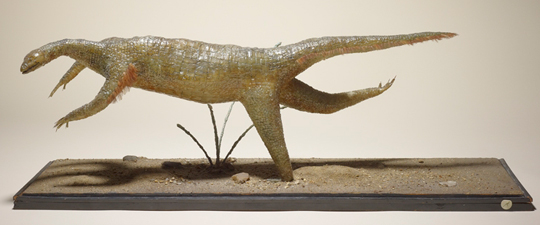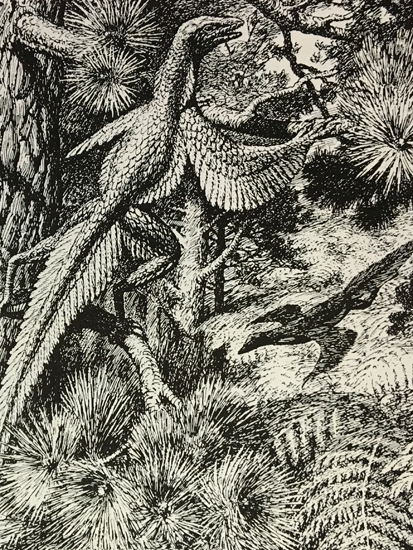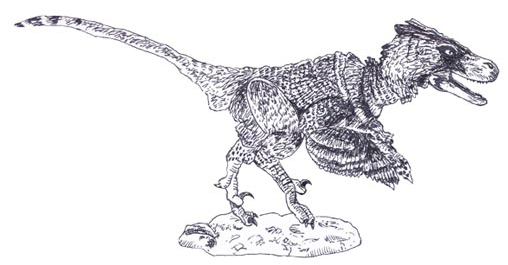Proavis – Ground Up or Tree Down?
Proavis – Ground Up or Tree Down?
Team members at Everything Dinosaur, took the opportunity whilst in London last week to pay a visit to the Grant’s Museum of Zoology, this hidden gem of a museum contains around 68,000 specimens and the densely packed cabinets house an absolute treasure trove of zoological wonders. The Grant Museum of Zoology and Comparative Anatomy (to give this establishment its full title), is part of the University College London, it plays an important role in helping to teach students about anatomy. It was founded by Robert Edmond Grant (1793-1874).
The Grant Museum
The Grant Museum of Zoology and Comparative Anatomy was established in 1827 to serve as a teaching collection at the newly founded University of London (later University College London). The influential Grant taught the young Charles Darwin and he was the first Professor of Zoology and Comparative Anatomy in England. A lack of teaching resources did not deter the enthusiastic scientist, he set about amassing an astonishing collection of specimens, diagrams, dissection materials and lecture notes, it is these that form the basis of the Museum today.
Saying Hello to “Proavis”
Tucked up high on a shelf, barely given a second glance by the casual visitor, is a rather strange animal. This is “Proavis”, otherwise known as Pro-Aves. It is not an anatomical specimen as such, it is not the preserved remains of a living animal, rather it a model that attempts to depict the ancestor of birds (Aves) and as such, it is extremely significant.
Saying Hello to Proavis – (Pro-Aves)
Picture credit: Everything Dinosaur
The rather strange looking creature is a little worse for wear, after all, it is over a hundred years old. Proavis consists of a wire armature, which has been covered in wax and real feathers. It represents a theoretical missing link between feathered, maniraptoran dinosaurs and the first birds, such as Archaeopteryx (A. lithographica). During the late 19th century, leading academics began to realise that birds may be closely related to dinosaurs. Such ideas were fuelled by the publication of the seminal work “The Origin of Species” by one of Professor Grant’s former pupils (Charles Darwin) in 1859 and the excavation of the first, very nearly complete fossil of Archaeopteryx in 1861.
A Model of the Hypothetical “Missing Link” Between Reptiles and Birds
Picture credit: Grant Museum of Zoology
A Model of a “Missing Link”
The model is based on an illustration of a “missing link” a hypothetical transitional form between the reptiles and birds. The term “Proavis” was first coined in 1906 by the English zoologist William Plane Pycraft. Pycraft wrote a number of books on evolution and natural history including “The Story of Reptile Life”, that was published in 1905. He believed that flight in early birds developed from ancestral forms that glided between trees, the “tree down” view. However, other academics at the time proposed alternative theories for the evolution of the birds. For example, the Hungarian polymath Franz Nopcsa proposed that flight developed first amongst fast-running terrestrial reptiles, which used their flapping arms to run faster.
The feather and wax model in the Museum originally came from Cambridge. It was probably made by a student and it reflects the “ground up” view as championed by the likes of Nopcsa.
An Illustration of a Transitional Form Between Reptiles and Birds “Tree Down” Concept
Picture credit: Gerhard Heilmann
A Delicate and Fragile Model at the Grant Museum
This delicate and fragile model may look very different from today’s interpretations of the first birds and the maniraptoran dinosaurs from which birds are descended, but it does represent an important milestone in academic thinking. Models like “Proavis” were used to explore evolutionary theories from more than a century ago. As such, it does represent a “transitional form”, epitomising how ideas about tetrapods have changed over time.
A More Modern Interpretation of a Reptile that was Ancestral to Aves (Dromaeosauridae)
Picture credit: Everything Dinosaur
The image (above) depicts a dromaeosaurid (Adasaurus). It is based on a dromaeosaurid figure from the recently introduced Beasts of the Mesozoic model range: Beasts of the Mesozoic Models.
Visit Everything Dinosaur’s award-winning website: Everything Dinosaur.





